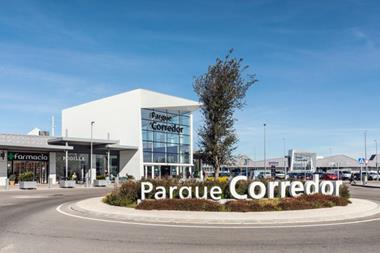Canadian pension fund giant CPPIB is actively expanding its investment horizon to Southern Europe as part of an expansion strategy on the Continent, European head of real estate investments Wenzel Hoberg told PropertyEU.
Canadian pension fund giant CPPIB is actively expanding its investment horizon to Southern Europe as part of an expansion strategy on the Continent, European head of real estate investments Wenzel Hoberg told PropertyEU.
‘Southern Europe has been challenged so much by the financial crisis that in the past it did not allow us to meet our required hurdle rates,’ Hoberg said. ‘But we hope this will change in the future. We plan to expand into these markets in the near future.’
So far in the new financial year started in April, Europe has accounted for around 50% of CPPIB’s completed investments in real estate but only a portion of recent acquisition commitments, Hoberg said. Deals closed so far in Europe include the purchase of a 50% interest in a core-plus/value-add portfolio involving eight Central London office assets held jointly with Hermes and the purchase of a joint 33.3% stake in the Bullring shopping centre in Birmingham in a partnership with UK REIT Hammerson.
Commenting on the fund’s acquisition programme, Hoberg said the fund continues to focus primarily on key developed and transparent markets such as Paris and London for the office sector. In the industrial space CPPIB is targeting main logistics nodes on a pan-European basis while in the shopping centre sector, it is looking at all major European markets.
In addition to standing assets, the company has a relatively large development portfolio with ongoing development projects in the UK, France and Turkey, where in 2008 it committed equity of €250 mln to Multi’s multi-billion euro Forum Turkey Fund. In the UK, CPPIB invested £163 mln in February 2012 to acquire a 50% stake in a 2.2 hectare development site in the West End of London. The Victoria Circle project will provide 84,500 m2 of residential, offices and retail space, as well as public amenities on final completion in 2018.
Development properties currently represent 6.8% of the fund’s property assets, according to the fund’s 2013 financial report. Hoberg believes CPPIB’s relatively large exposure to development projects is peculiar for institutional investors, which traditionally take very little risk. ‘We are quite open to participate in developments as we invest across the entire risk spectrum. We buy core properties but we are prepared to go up the risk curve and invest in developments or in opportunistic transactions. This is explained by the fact that we are total-return-oriented and less focused on near term income and cash flow. We do not have to fulfil certain distribution requirements as is the case for insurance companies. We look at real estate from the perspective of the total portfolio, with a long-term view, which means we can still afford a certain amount of risk in the scope of the total fund.' However, he continued: 'We are more conservative on the asset level. We do not compromise on the quality and location of the asset, and we only look at institutional-quality properties.’
‘Smart partner’ approach
Toronto-based CPPIB started actively investing in real estate internationally only in 2006 but its mission in foreign markets has been relentless. In 2008, the fund opened offices in London and Hong Kong and started developing its international presence.
Today, less than 30% of the pension fund’s C$20 bn real estate portfolio is invested in Canada. ‘Our business plan at the moment is to invest C$2-4 bn per year on a global basis. Geographically, this means about C$1 bn for each region - Europe, Asia, and Americas,’ commented Hoberg. Real estate, along with infrastructure, is a good fit for the long-term view of the fund and currently represents 11% of its total portfolio. Hoberg: ‘We will probably be doubling our property holdings in the next 10 years but this growth will largely be in line with the overall increase of our assets under management.’ The fund expects to reach about C$275 bn of AuM by the end of 2020.
Real estate generated an average annual return of 12% over the past three years, ranking as one of the best performers in the group’s investment portfolio. Hoberg reckons the fund can afford the luxury of a long-term investment horizon and has the advantage of a so-called total portfolio approach. ‘We look across our investment portfolio from a risk-return perspective. And we make our decisions based on these metrics rather than targeted percentage allocation,’ he noted.
Despite the large size of its property holdings, CPPIB’s real estate team is limited to around 50 experts worldwide, with a dozen professionals based in London. In fact, the fund prefers to rely on sector or market specialists to manage its property investments and the creation of joint ventures has become a hallmark of its international investment strategy. While the company used to invest through funds and separate accounts in the past, Hoberg confirmed that the focus has shifted to joint venture partnerships which provide greater alignment of interest as well as greater control and transparency. According to the company’s 2013 financial report, investments through joint ventures currently represent 83% of the fund’s real estate assets.
‘We have a ‘smart partner approach’,’ Hoberg explained. ‘We like to team up with operators with capital and know-how, ideally on a 50-50 basis. Given our scale, we can achieve the property diversity needed to keep total real estate portfolio risk prudent without the burden of fund structures and related fees and expenses.’ The fund’s property strategy also favours direct investments in bricks and mortar as opposed to acquisitions in public property companies or operating real estate firms. ‘Our general business is to stay in private equity real estate,’ Hoberg said. [Note: the company recently departed from this strategy with an investment in a publicly traded shopping centre owner in Brazil.]










